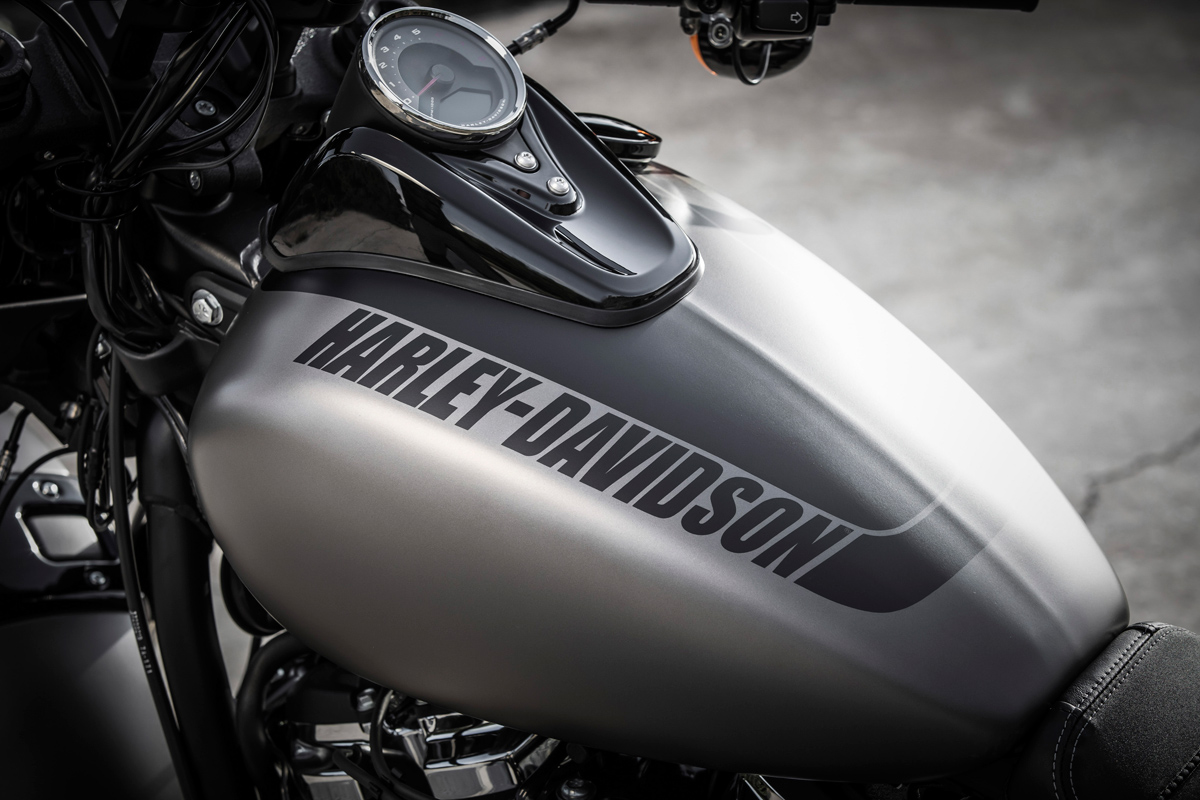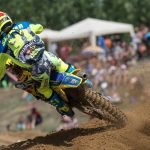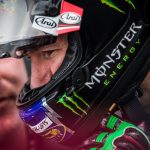Some say Harley-Davidson’s recent flurry of new models is a reaction to the firm’s ageing customer base threatening its future; others reckon the main trigger is reborn rival Indian’s growing challenge. Whatever the motivation, there’s no doubt that Harley has been busy of late. From giant tourers to the entry-level Street, the Milwaukee marque has been releasing new and updated bikes like crazy – and has announced plans for 100 more in the next decade.
Latest models to get the makeover treatment are some of the most important. Eight “Big Twins” are revamped to form a new Softail family, in what Harley is calling the biggest development project in its 115-year history. They include the iconic Fat Boy with its disc wheels; classical Low Rider and Street Bob cruisers; Heritage Classic retro-tourer; and radically low-slung Breakout.
Perhaps most striking of the bunch is the revamped Fat Bob, named after its blend of broad gas tank and cut-down bobber style (now all the rage with rivals including Indian and Triumph launching Bobbers of their own). Previously distinguishable by the pair of round headlights it has worn since its launch in 2008, the Fat Bob gains a new face dominated by a rectangular LED light.
All eight Softails are upgraded with Harley’s more powerful and refined Milwaukee-Eight engine, a modified version of the eight-valve V-twin introduced with last year’s touring family. The Fat Bob is among the four available with the larger Milwaukee-Eight 114 engine, alongside the regular 107 unit. The figures relate to cubic-inch capacity, signifying an increase from 1745 to 1868cc that boosts torque throughout the rev range.
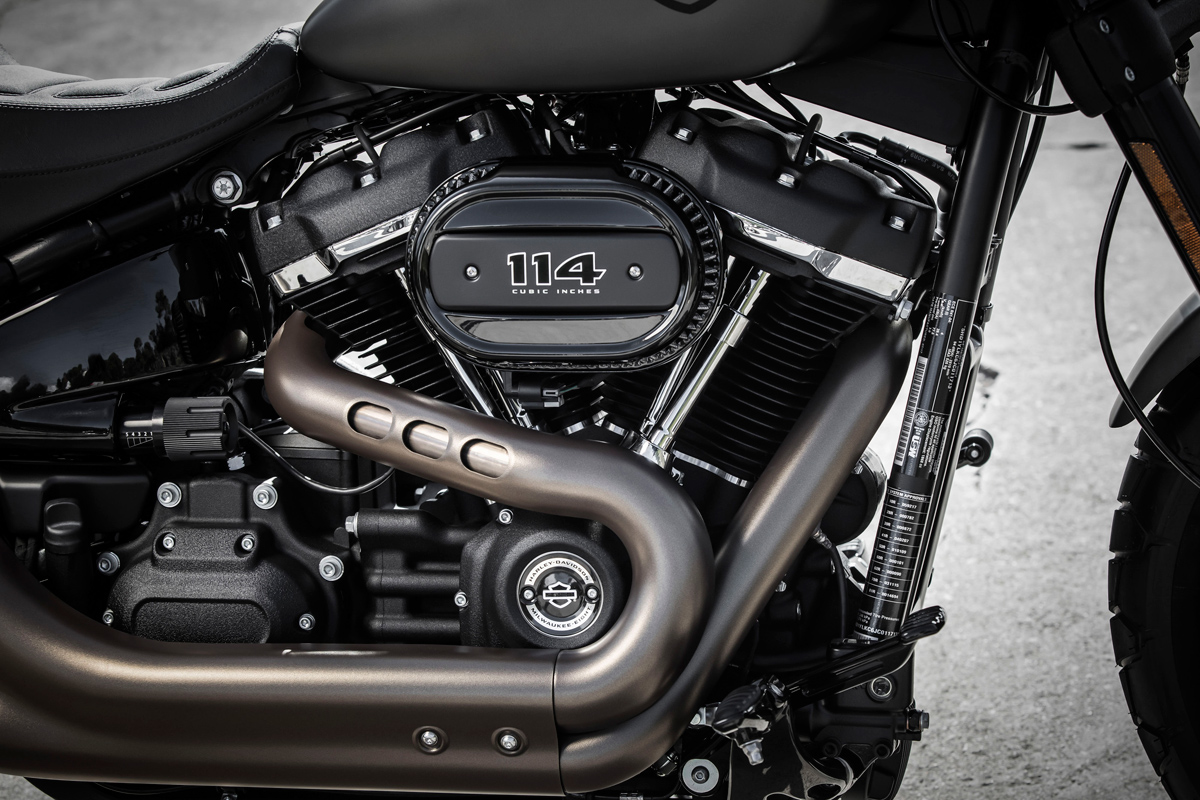
All eight models also feature new chassis incorporating lighter, considerably stiffer steel frames and swing-arms (this Fat Bob is a handy 15kg lighter than its predecessor.) They all also have new suspension including dual-bending valve forks, as on the Touring models, and a diagonally mounted rear shock.
Where the Fat Bob differs is that it’s the only Softail with steeper, 28-degree rake instead of the 30 degrees of most models. It’s also the only one with a beefier front end, featuring upside-down forks, and a twin-disc front brake with four-piston calipers. Its 16-inch cast wheels wear tyres in broad, 150-section front, 180 rear widths.
The Fat Bob has always been a streetfighter with an edgy style, and nothing much has changed there. The new bike retains its predecessor’s format of drag bars, relatively tall seat and forward-set footrests, which combine with the tank-mounted instrument panel – and resultantly clean handlebar area – to give a aggressive, snub-nosed look and feel.
In its 114ci form the Bob comes with a distinctive “ventilator intake” air filter by its rider’s right knee. It pulls crisply off idle, picking up the pace with effortless midrange grunt. The big V-twin unit churns out enjoyably strong force almost regardless of revs, its muted exhaust note the only slight disappointment.
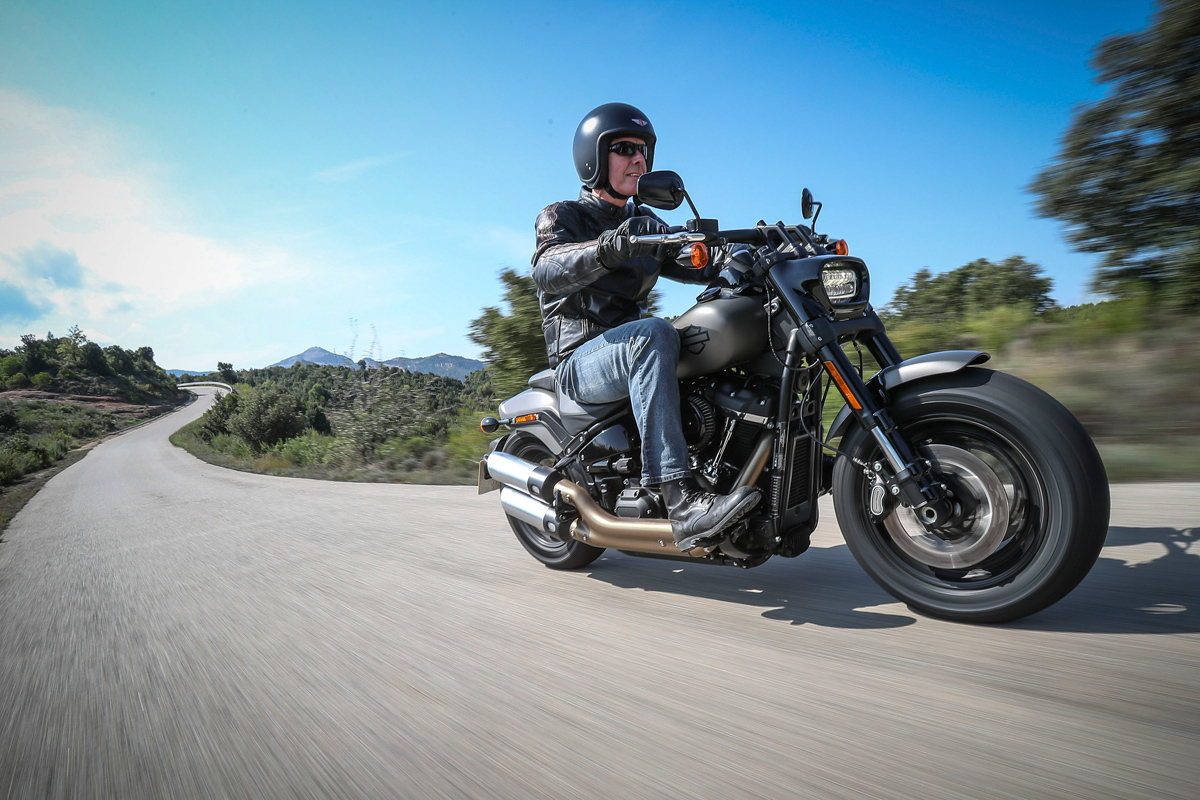
Straight-line performance is certainly up on the outgoing model. Harley claims an advantage of a couple of bike lengths in 0-60mph time, and in top-gear acceleration from there to 80mph, with a similar gain between 107 and 114ci powerplants. That’s easy to believe.
Harley’s engineers put much effort into giving the solidly mounted Milwaukee-Eight engine the right amount of vibration, partly by incorporating an extra balancer shaft to the Touring family unit. Although there’s some vibration up towards the 5500rpm limit, the engine’s low-rev grunt means you rarely need to go there, and unpleasant vibes just aren’t an issue.
Chassis performance is also improbably good; a notable progression from the previous model, thanks mainly to the blend of stiffer frame, more refined suspension and additional ground clearance. Harley says the new frame is 65 per cent stiffer, which gives a 34 per cent increase in overall chassis rigidity.
In the Fat Bob’s case a big part of the improvement is down to its uprated suspension, which does a very decent job of combining comfort and cornering control. The fat front tyre means the Harley requires fairly firm counter-steering to change direction, but when ridden forcefully it can be cranked through twisty sections at a very entertaining pace.
It even demonstrates improbably generous amounts of ground clearance when its chunky-patterned Dunlops are made to work hard. The twin front discs allow very sharp braking; a useful advantage over the other Softails and requiring notably less lever pressure for serious stopping.
Like its seven siblings it comes with keyless ignition, modified charging systems and a USB socket under the steering head. Practicality and sophistication have never been big Softail selling points, but a little more of each does no harm, and helps justify the price (£15,845 as tested in the UK; the Fat Bob 107 starts at £14,295).
Whatever the real main motivation for Harley-Davidson’s recent burst of product updates, anyone who likes the Fat Bob’s new look should be grateful. That square-jawed styling might be its most obvious feature, but this is a comprehensively ‘refreshed’ Harley that is faster, lighter, sweeter-handling, better braked and more refined than ever.
Photos by Enrico Schiali & Stefano Gadda
